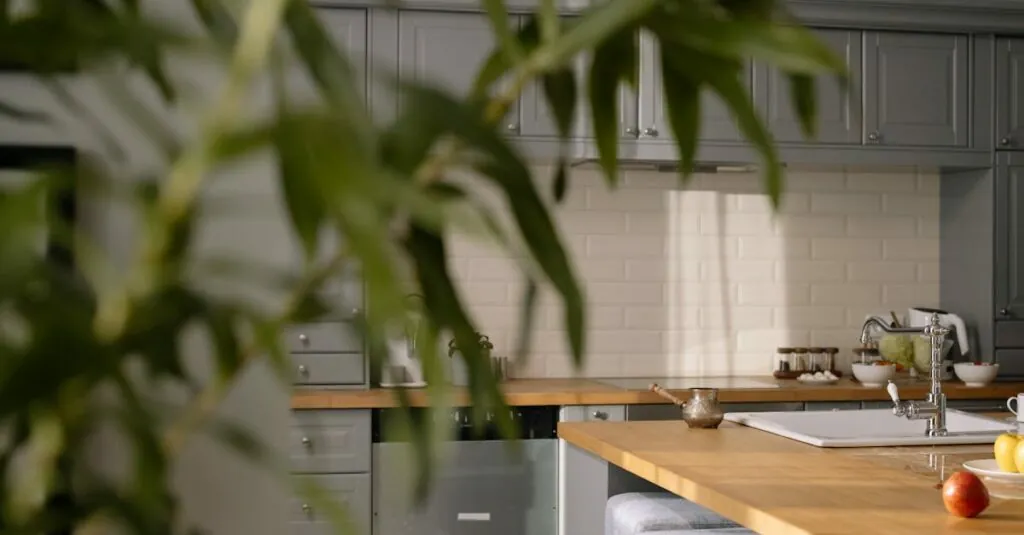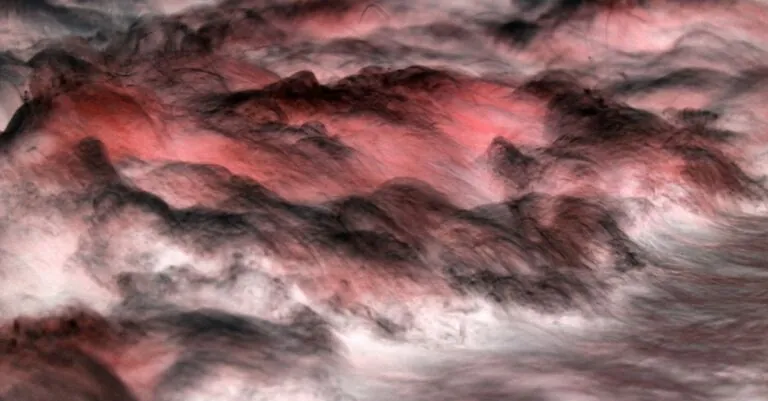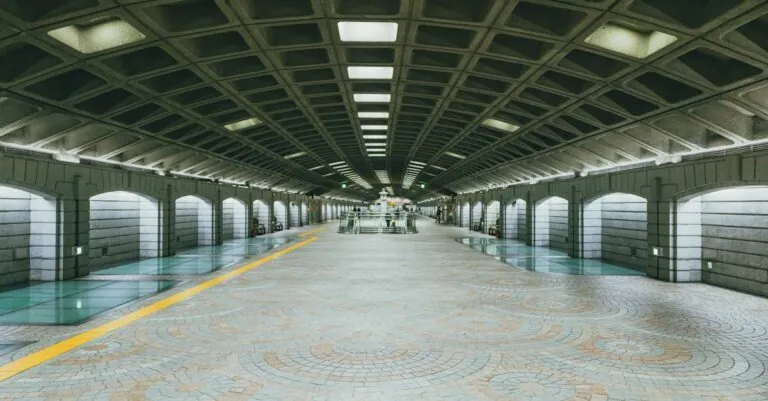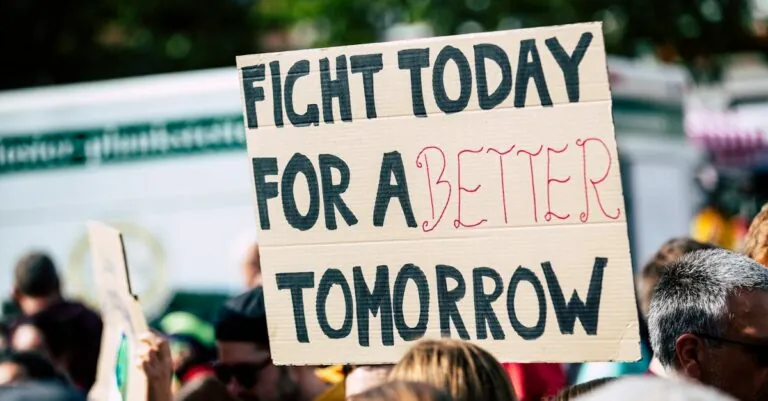In the ever-evolving world of design, trends come and go faster than a cat meme goes viral. One moment, everyone’s swooning over minimalist aesthetics, and the next, it’s all about bold colors and playful patterns. Keeping up with these shifts can feel like chasing a runaway train, but it’s essential for anyone looking to stay relevant in the creative landscape.
Table of Contents
ToggleOverview of Design Trends
Design trends evolve rapidly, reflecting cultural shifts and technological advancements. Current trends showcase a blend of minimalist designs and vibrant, bold patterns that create striking contrasts. Creative professionals must adapt to these changes to remain relevant in a competitive market.
Sustainability plays a crucial role in modern design. Eco-friendly materials and processes have become priorities among designers. Innovations like upcycled products and biodegradable materials highlight this trend, allowing for artistic expression without harming the environment.
Functionality continues to influence design choices. Space-saving furniture and multi-purpose designs meet the needs of urban dwellers seeking practicality. Designers focus on creating user-friendly spaces that enhance daily living, emphasizing comfort alongside aesthetics.
Color palettes have shifted toward nature-inspired hues. Greens, blues, and earthy tones dominate the landscape, creating serene environments. As a result, designers draw inspiration from the natural world, crafting spaces that promote well-being and tranquility.
Technology integration has transformed design approaches. Smart home devices and immersive experiences redefine user interaction. As technology evolves, designers must anticipate and incorporate these advancements to create engaging and functional environments.
Design trends also emphasize inclusivity and accessibility. Spaces must cater to diverse needs, ensuring comfort for all users. Awareness of social issues encourages designers to create environments that foster connection and equality.
Emerging trends reveal a fusion of the old with the new. Retro styles make a comeback, blending nostalgia with contemporary elements. This juxtaposition resonates with audiences, creating a unique visual experience that engages and captivates.
Current Design Trends
Design trends constantly evolve, reflecting cultural shifts and technological advancements. Notable movements in today’s design landscape include the following.
Minimalism
Minimalism emphasizes simplicity and functionality in design. Utilizing clean lines and neutral color palettes promotes a sense of calm and order. Designers focus on essential elements, eliminating unnecessary distractions. Open spaces foster tranquility and clarity, enhancing user experiences. Furniture often features multifunctional capabilities, appealing to urban dwellers with limited space. Minimalism encourages mindfulness, appealing to audiences seeking serene environments.
Bold Typography
Bold typography demands attention and delivers messages with clarity. Designers use strong, oversized fonts to create engaging visual hierarchies. This trend fosters creativity and individual expression, allowing brands to establish their identities. Colors and textures complement these typefaces, further enhancing the overall aesthetic. Mixing different font styles often results in visually compelling designs. Overall, the effective use of typography transforms communication into an art form.
Sustainable Design
Sustainable design prioritizes eco-friendly materials and processes. Increasingly, designers incorporate recycled or renewable resources into their projects. Energy-efficient solutions, such as passive solar heating, reduce environmental impact. Brands emphasizing sustainability also demonstrate social responsibility, appealing to environmentally-conscious consumers. This trend encourages innovation, as creators find new ways to harmonize style and environmental consciousness. Ultimately, sustainable design contributes to a healthier planet for future generations.
Emerging Design Trends
Emerging design trends reflect the ongoing evolution in both aesthetics and functionality. Designers increasingly draw inspiration from nature, leveraging technology to create innovative solutions.
Biophilic Design
Biophilic design focuses on connecting people with nature. Incorporating elements like natural light, organic materials, and indoor plants enhances well-being in living and working spaces. Research shows that integrating biophilic elements can improve mood and cognitive performance. Spaces featuring ample greenery promote a sense of calm and reduce stress. Designers prioritize sustainable practices, using eco-friendly materials that complement these natural elements. The trend encourages harmony between built environments and the natural world.
Augmented Reality Integration
Augmented reality (AR) integration transforms user experiences in design. Enhancing physical spaces with digital overlays provides interactive opportunities for users. Designers utilize AR to visualize changes before implementation, streamlining decision-making processes. User engagement increases as clients experience projects in immersive, realistic ways. The trend involves innovative applications for retail, education, and interior design, showcasing dynamic possibilities. Designers embrace AR to push creative boundaries, making spaces more adaptable and responsive to individual needs.
Impact of Technology on Design Trends
Technology significantly influences design trends, shaping aesthetics and functionality. Smart home devices change how users interact with spaces, creating a seamless blend of comfort and utility. Design software advancements streamline the creative process, allowing designers to explore new ideas quickly and efficiently. High-resolution displays elevate visual experiences, prompting designers to focus on stunning graphics and vibrant colors.
User experience remains a priority as designers utilize data analytics to understand user preferences. Insights gathered from these analyses lead to tailored environments that resonate with target audiences. Increasing reliance on virtual reality (VR) and augmented reality (AR) tools provides clients with immersive previews, enhancing the decision-making process in design projects.
Collaboration tools dominate the design sphere, fostering teamwork and innovation, regardless of geographical locations. Remote teams can share concepts in real time, expediting project timelines. Moreover, 3D printing technology revolutionizes the prototyping phase, enabling rapid iterations and reducing production costs.
Sustainable technology gains traction as eco-friendly options become available. Designers increasingly adopt practices that align with energy efficiency and reduced waste, meeting consumer demands for sustainability. The rise of eco-conscious consumerism drives the integration of renewable resources, further impacting design choices.
Accessibility technologies play a vital role, ensuring spaces cater to diverse needs. Features like voice-activated controls and adaptive design elements create inclusive environments. The trend toward inclusivity reflects a broader societal commitment to equity and representation, influencing how spaces are created.
Overall, technology paves the way for innovative design trends that prioritize functionality, sustainability, and inclusivity. As these elements intertwine, they redefine what’s possible in the design landscape.
Staying attuned to design trends is essential for anyone in the creative industry. The fusion of aesthetics and functionality continues to evolve alongside cultural and technological shifts. As designers embrace sustainability and inclusivity, they create spaces that resonate with diverse audiences while promoting well-being.
The integration of innovative technologies like AR and VR is transforming user experiences, making design more interactive and engaging. With a focus on nature-inspired elements and eco-friendly practices, the future of design holds exciting possibilities. By adapting to these trends, designers can ensure their work remains relevant and impactful in an ever-changing landscape.




